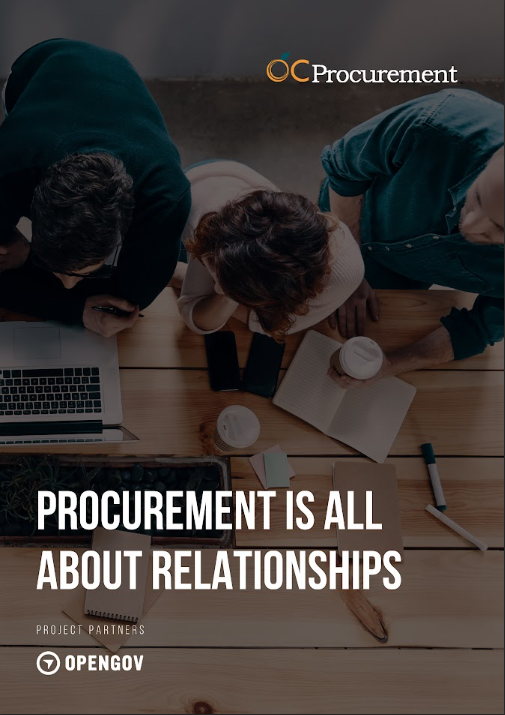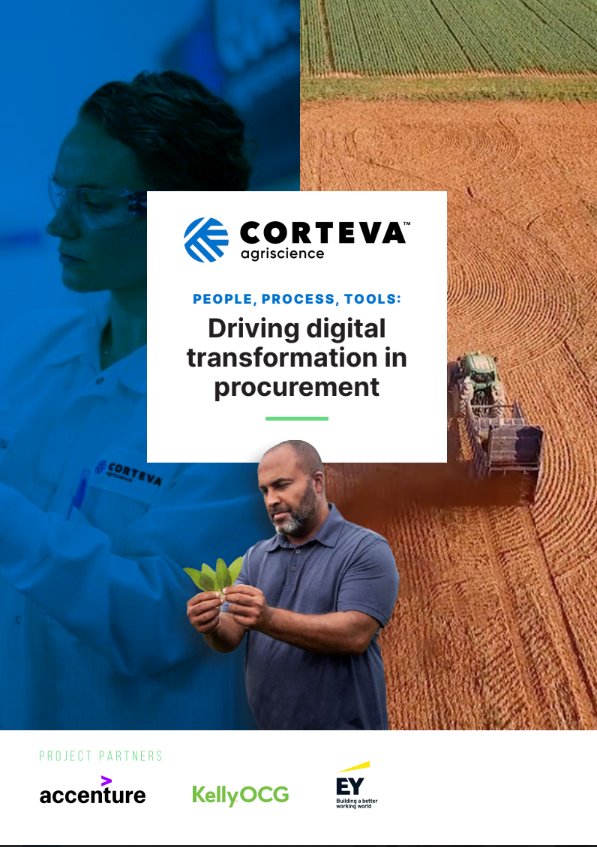The role of Indirect Procurement has evolved into a strategic function. Over the last decade, the transformation and evolution of procurement has enabled a wider understanding of what the true value of procurement can be to a business. An interesting evolution, and a growing trend, has seen many people shifting from direct into indirect procurement.
“The buyers from direct procurement often say that indirect are the ones who buy pencils or copy paper,” explains Alejandro Basterrechea, Head of Procurement Operations (Indirect Procurement) at Zalando. “Now, if I look at our team, we have people coming from the business functions or the direct procurement space. It’s becoming more attractive because you have other levers and can influence specifications more than in the direct space.” This is an observation shared by Djordje Stevanovic, Director Indirect Procurement, who believes that the time when indirect procurement was merely in charge of office supplies and company cars is firmly in the past. He says: “Once the business and the world evolved and everything became more global and competitive, the attention to cost grew. Not only cost savings, but how to really use the money in the best way and at a speed that allows us to become a strategic partner to the business.”
The evolution from transactional to strategic business partner
Becoming more of a strategic partner is exactly the remit that Indirect Procurement at Zalando is working towards, with Stevanovic being brought into the company to build up an indirect procurement function and support the company in its ‘next level’ of growth following a successful IPO in 2014.
Zalando was founded in 2008 and as Germany’s most successful start-up and one of the first unicorns, it experienced hypergrowth in terms of revenue, customers and employees and therefore sought to control the increasing spend more professionally, by investing into an indirect procurement organization. “The main challenge was that we needed to build two things at the same time from the ground up,” explains Basterrechea. “On the one hand an indirect procurement organization and all its processes and people and on the other, an eProcurement tool. There was already a core group of people doing indirect procurement activities and reporting into the CFO organization, but in my experience, usually in such an organizational transformation, you either already have the tools and need to restructure the teams or you already have an organization and need to run a digital transformation.”

Alehandro Basterrechea, Head of Procurement Operations (Indirect Procurement)
“At Zalando, this was about doing both at speed and at the same time in a high speed environment all the while being customer obsessed and starting to deliver value,” remembers Alejandro Basterrechea. “This was a new challenge that required a mindset change for any experienced procurement professional, but it was worth it. We see the results now”.
In 2015, Zalando outlined a very clear roadmap as to how it wanted to build this indirect procurement function. The journey can be defined by four phases. Phase one focused entirely on defining the why and value of the organization and how indirect can be structured, including the organizational design and implementation of user-centric solutions to suit Zalando’s needs. The second phase looked at what Basterrechea describes as “ramping up”.
“Now, you have to look at how you ramp it up from an organizational side; looking at staffing, defining skill sets, job profiles and acquiring the right people at the right time,” he says. “On the tooling side it’s about user centricity and how we implement tools people love to use and how we can get the most out of them.”
Phase three explores professionalisation. More specifically, Zalando Indirect Procurement is at a stage where it has reached a critical mass in terms of the right organizational structure, level of expertise and eProcurement usage. “So, the question is how to take advantage of an established organization and bring it to the next level to reach the status of strategic business partner that delivers value to its stakeholders and gets the seat at the decision-making table,” says Stevanovic.
Phase four is all about creating the procurement of the future. “You have the technology, the processes and the data,” he says. “You have the right people and the right sizing, but now you need to bring value. We have a good backbone and now need to deliver based on the value we bring.”
It was at this point in the journey that Stevanovic joined the Indirect Procurement team at Zalando. “I was impressed by the speed, the entrepreneurial culture and customer obsession mindset of the company. This was also reflected in procurement, which in four years achieved what it would have taken a decade in other organizations.” For Stevanovic, whose career saw him move from direct to indirect procurement, this journey for Zalando is one that can be defined by “stakeholder management”, meaning managing the ‘right’ stakeholders in the ‘right’ way. In other words, identifying the right internal customers, understanding their needs and addressing those needs proactively by leveraging the tools and talent it has implemented so far.
“You need to explain what you would like to do with your internal customer, what kind of value you can bring, and you need to execute and bring that value,” he says. “You accept the fact that you need to gain the respect and take on the responsibility of things that are outside the normal responsibility of a procurement organization.” Stevanovic believes that this speaks to that broader perception of indirect procurement and how most people think of a buyer as just a negotiator. Stevanovic is keen to highlight that negotiating is but one part of the ‘entire set’ of services that indirect can run. “We understand and complement the internal customer and we can offset and neutralize the things that aren’t working for them,” he says. “This is how you can save money. You can also save time and resources. The real goal of the indirect procurement organization is to actively be a part of the daily life of your customer. They are the stakeholder, so stakeholder management is essential.”
Enabling growth and the impact of technology
The indirect procurement journey for Zalando is about enabling objectives like growth, financial impact and customer satisfaction, while providing the right level of spend and cost management as well as enabling the user’s business to make informed decisions. This requires a level of agility combined with the right process and technology in place to minimize work for the business so they can focus their effort on growth; generating revenue, while onboarding and generating more customers. Spend management is a blanket term that we hear in all procurement organizations, but for Basterrechea it’s about how indirect can simplify processes with enough transparency and compliance so that people can manage their budgets properly and efficiently. “In doing this, you will collect so much information from internal and external customers that you can continuously provide the right level of transparency for smart decisions,” he says. “It enables better decision making, which translates into indirect procurement because they can profit from all the strategic value that comes from it.”
Transparency, compliance, and in turn data, allows the conversation between indirect procurement and the internal customers to change. In short, it allows indirect to assert its position from a support or control function to a strategic business partner. Data is the key to this. “If you have the data, the conversation becomes fact based,” explains Stevanovic. “Data-driven conversations are more effective. This can help areas of the organization be faster in achieving the target of being on the same page.”
There’s also agility and the system. If the entire team is associated with a tool that is difficult and doesn’t work well and is somewhat clumsy to use, the internal customer will not see indirect procurement as a ‘giant’ in the business. “We have to be a giant because we are one of the few organizations that have access to all areas of the business,” says Stevanovic. “This is an incredible advantage. We are creating a bridge and connecting the separate areas that are not as close as they should be. We can bring opportunities that are not being considered or that the business is unaware of.”
Data driven Procurement
So it’s clear that data and stakeholder management go hand in hand. For two men whose careers have been defined by procurement, communicating its value and navigating the complexity is second nature. Doing this sounds simple on paper and data certainly helps, but ultimately there remains a lack of information as to what indirect procurement can actually do for business.
Basterrechea notes: “At Zalando I’ve been closer to other departments more than in other companies. Having good technology and strong processes helps bring everybody together because you bring the same language within the same system and process and you generate all this important data for these teams.Procurement becomes the spider in the web. You’re pulling different people and different information to the table to help the stakeholder make a decision based on the data you have from other areas.”
Stevanovic is keen to acknowledge that it is still a step-by-step process, regardless of how seamless they are making it. “It’s about providing the right tool and explaining to the business that if you follow the process and allow us to help you – everything you’re buying externally will be processed in a much smoother way because you’ll have a greater understanding and control of your budget,” he says.
“It’s just a fact that you need to put the pieces of the puzzle together to look at what you do as part of the business from the right perspective. Sometimes, you may not have that perspective because it’s not your first priority. But if you allow the procurement to help you in this you will have even more money than you did previously to follow up on your priorities even more.”
As part of phase one and two of this journey, indirect procurement now has a P2P process that enables the organization to collect this information. They have also implemented additional tools to process the information and provide visibility. The team will then analyze the data and get conclusions out of it together with the business because they ‘read part of the story, but we don’t know everything’. It’s about how the information is prepared and ultimately shared.
Trust is crucial to indirect procurement and having this P2P tool and process, as well as being data oriented, goes a long way in building that trust and influencing change for the better. “Figures don’t lie,” says Stevanovic. “Once the source of your data is proven and is visible to everybody then you have a fact-based discussion.
But the real target is to be part of the team because the people have to see another perspective. We look to have one of our people taking part in leading discussions.”
Basterrechea concurs with this sentiment: “If you’re able to present the high level numbers and also provide answers on the details, that helps the business because one number doesn’t tell you everything.”
“Then there’s high level agility. If somebody asks you for something, but it takes you three weeks to collect, analyze and come up with an answer from the data, you’re too late. Especially in an organization like Zalando where three weeks is a long time. Speed plays a role and this ability, to go up and down in the details at a high level when required, is essential.”

Djordje Stevanovic – Director Indirect Procurement
Indirect procurement then, for Zalando, is becoming a data driven organization and so it requires its people to be data-driven professionals. For some this is a simple task, as they will have cut their teeth in a world driven by data, for others this will require training and coaching. Both Stevanovic and Basterrechea agree though, that this has to come from the very top.
“Djordje is already a data driven person, so the discussions are based on facts and this becomes part of the team’s culture,” says Basterrechea. “It becomes part of the culture. But how do you enable the culture? What we’re trying to build is a lot of self-service data solutions where our buyers are able to pull out data and information by themselves with ease. This is achieved through simple dashboards and reportings.”
Simplicity is the key and Djordje knows more than anyone that simplicity will allow the organization to be more effective and efficient while also building ‘momentum’. “Everybody has to have access to the data. This doesn’t have to be a complicated process,” he says. “If you have access to the data then the expectation is that you can pass this information to the team with ease. Don’t come to me with a feeling, come to me with something that is really proven in the figures because then we can create the momentum and build on this.”The secret to this is coaching and explaining why something is making sense to do it in this way.”
Basterrechea is a firm believer that leadership has to lead by example by asking the right questions and allowing the indirect to provide the right information and data as he feels this is what will enable this to become the norm, embedded within the culture. “My team is one of the service units providing the data,” he says. “It’s the customer’s first mindset, so they need to understand what the buyer needs. They need to understand the role, what they want to achieve, and then work backwards to build the reports, the tools and the queries that they need to make them easier for them. Again, we don’t make decisions with gut feeling, it’s not part of our culture. People like to be convinced with facts.”
Customer centricity
As indirect procurement, having that customer first approach is what makes it a true strategic partner to the business. After all, indirect procurement is listening, engaging and ultimately supporting the business in its decision making and strategic growth. “Remember, indirect procurement doesn’t own a budget,” says Stevanovic. “Everything that you do, you do for someone else. This has to be part of the DNA of a buyer.”Basterrechea continues: “Very successful companies are the ones that are very customer-oriented. Look at the success of Zalando, it is based on customer obsession, convenience, and offering solutions. We help them to help us, and once you have a customer obsession culture, which I believe we have in Zalando; it forces you to think simpler and to be more efficient. This forces you to rethink how you approach them. Be it through process, tools or the data and how you provide it. Customer obsession is the key.”
Procurement in times of risk and uncertainty
At the time of writing, the COVID19 pandemic has truly gripped the world, causing major disruption to both life and business operations. Understandably, this has taken its toll on Zalando and indeed this procurement journey. Zalando, along with many businesses around the world, has had to adapt its operations in order to survive, thrive and help others as a good corporate citizen. As part of a broader corporate drive, Zalando is doing all it can to keep its employees safe and to protect them as well as, and looking to keep the business running by looking at how it can maintain the partnerships that it has.
The company has been working closely with its brand partners to look at how it can help them through this crisis. Zalando is an online ecommerce business and so it has used this perspective to identify and offer support for those partners and onboard them as online retailers in a process called Connect Retail. Through this, Zalando has expedited the onboarding of brick and mortar stores and the partners can sell over its platform without any commission fee for a disclosed amount of time. This has been introduced and trialled in Germany, with the intention being to expand it to other markets, as well.
From a pure indirect procurement perspective, Zalando has invested into the procurement of protective equipment. “We were very fast because we were able to deliver a very important number of masks and different typologies of masks, to our people in the warehouses,” says Stevanovic. “We also worked to create the right environment to come back to the offices, if and when that happens, by providing our employees with the right protective equipment.”
This procurement approach was a mixture of tactical and strategic buying and was extremely successful for Zalando, thanks to its agility and the effective implementation of the P2P system. Through this, indirect procurement could select a supplier, check their conformity to the European standard for protective equipment and materials and pay for them all within the same day, whether it be Europe or Asia.
Protecting the business, alongside protecting lives, is also a leading priority amidst this pandemic and Basterrechea champions the manner in which Zalando was quick to move in this regard. “Once a decision was made, and we moved towards cost containment and protecting the business, we were able very quickly to lower approval thresholds, so that executives were more involved in the cost control, cost containment, and cost of business,” says Basterrechea.“What that has done is allowed us to leapfrog the implementation of digital solutions such as electronic invoices and e-signatures.We expedited a process that would have taken months into a few days. It’s really a testament to how we turned a challenge into an opportunity.”
The pandemic has shone a light on the solid foundations that Basterrechea and Stevanovic have built as part of this procurement journey. While it has been a time of great duress, it’s also been an opportunity to reflect on what has been key to succeeding, even in a time of crisis. “I think acquiring the Zalando culture within procurement, that shows its ability to act agile when the business needs and its ability to reduce costs when the business needs,” says Basterrechea. “But we also have the ability to adapt back again, when the business requires you to support growth and not cost cutting. That’s key.”
Building Procurement of the Future
For Stevanovic, it goes back to people and stakeholder management. “Whether it’s stakeholders learning about the culture and the environment and stakeholder management, this is a job where you need to work with others,” he says. “You cannot work in isolation. You need to be present in the day-to-day of your internal customer in a way that supports them.”
People are key in building procurement of the future. Attracting and hiring the right talent is the most important factor to have success as an organization. This includes not only the skillset but also the mindset. “We have a very broad and diverse group of excellent professionals in our team. A truly international team that includes people from the most diverse procurement background. Some of them came from the business functions, some of them have jumped into other areas like data analytics or solutions management within the team and some of them have changed from direct to indirect,” says Stevanovic.
Zalando’s Indirect Procurement vision is to become the trusted value creator partner to the business by providing the most user centric procurement solutions, taking all the advantages of digitalization, becoming a data-driven organization, supporting the internal customers in implementing their business strategy addressing their needs through the most efficient and solid supply base and, by definition, ensuring the highest level of motivation and engagement in the team.









